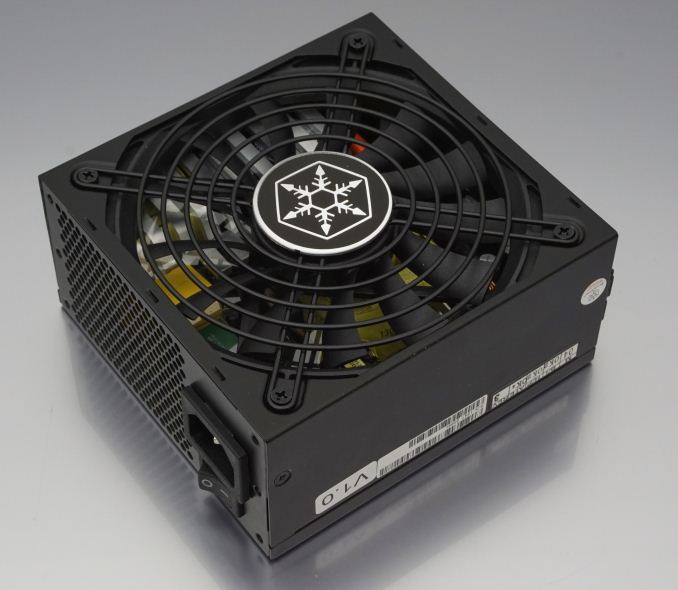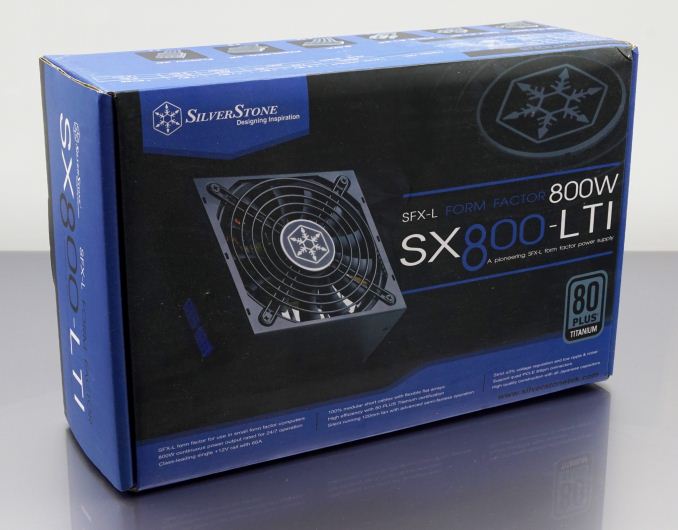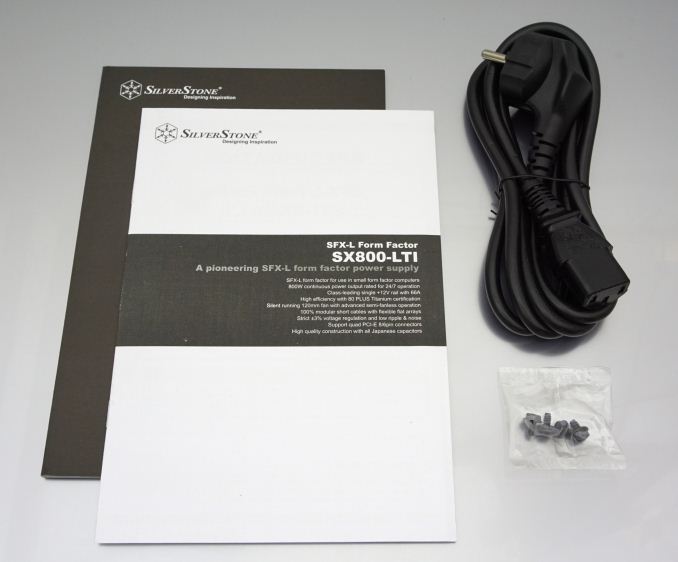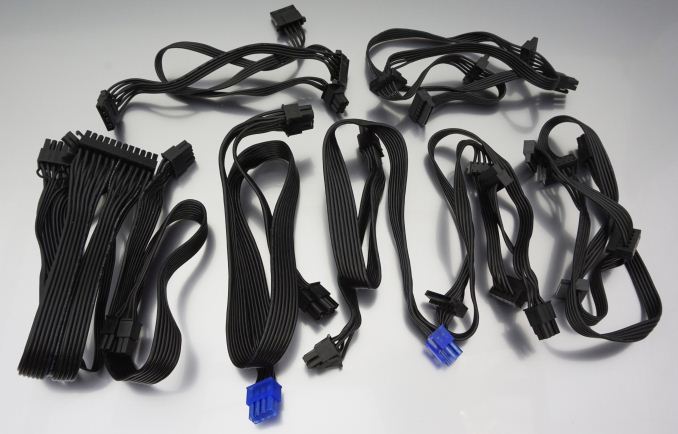The SilverStone SX800-LTI SFX-L 800W PSU Review: Big PSU, Small Niche
by E. Fylladitakis on January 18, 2018 9:00 AM EST- Posted in
- Cases/Cooling/PSUs
- SilverStone
- SFX
- SFX-L

When building a typical ATX gaming system, buyers have access to myriads of available power supply units (PSUs), allowing the easy selection of a product that matches their performance requirements and budget. However, the recent trend of building high performance entertainment and gaming PCs for use in the modern living room is forcing a reduction of the system’s dimensional proportions. PC case and system manufacturers are trying to compete with both each other and gaming consoles, ceaselessly introducing contemporary designs that led to the broad selection of small form factor (SFF) products available today.
Today users can easily find numerous mATX/ITX motherboards and SFF cases designed for gaming systems, but the selection of quality SFX PSU units remains very limited. A few manufacturers shyly released new SFX PSUs during the past couple of years, but still the variety of SFX PSUs is nonexistent when compared to that of normal ATX units. When trying to find SFX units capable of handling the power requirements of top-tier gaming systems, the number of available products usually can be counted on one hand.
SilverStone is a company known to invest a lot on SFF designs and has been striving to cover the needs of most users as well as possible. As far as SFX PSUs go, we have recently reviewed their mainstream ST30SF and ST45SF units, as well as the imposing SX700-LPT 700W SFX a year ago. One would think that 700 Watts are more than enough for any SFX system, but SilverStone does not seem to agree. In this review we are going to have a look at the SX800-LTI, an 80Plus Titanium certified unit with a maximum output of 800 Watts, making it the most powerful SFX PSU currently in existence.
| Power specifications ( Rated @ 40 °C ) | |||||
| AC INPUT | 100 - 240 VAC, 50 - 60 Hz | ||||
| RAIL | +3.3V | +5V | +12V | +5Vsb | -12V |
| MAX OUTPUT | 16A | 15A | 66A | 2.5A | 0.3A |
| 80W | 792W | 12.5W | 3.6W | ||
| TOTAL | 800W | ||||
Packaging and Bundle
We received the SX800-LTI into a large cardboard box that could fit a typical ATX unit. The box is very sturdy and we found the PSU sandwiched between thick polystyrene foam pieces inside, providing ample shipping protection. The artwork is relatively simple and mostly limited to pictures of the unit itself. The most basic features of the PSU can be read at the front side of the box and more details are printed on the back.
SilverStone usually is not overly generous with the bundle of their products, sticking to providing only what is really necessary, and their top SFX unit is no exception to that rule. Inside the box we only found a well-written manual, a typical AC power cable and four black 3M mounting screws. Strangely, SilverStone does not supply a SFX to ATX adapter along with the SX800-LTI. They did not with the SX700-LPT either, but they do with lower output models, which is very strange, as these powerful units are far more likely to find their way into ATX-compliant cases than low-output models.
The SX800-LTI is a fully modular PSU, meaning that every cable can be detached, including the 24-pin ATX cable. Making the 24-pin ATX cable detachable usually does not make any practical sense, but it does in this case, as the user can replace the short 30 cm (11.8”) ATX cable with a longer version if the PSU is going to be installed inside an ATX case. All of the cables are “flat” type cables, with black wires and black connectors. The sole exception are the PSU-side connectors of the PCI Express power cables, which are blue.
| SilverStone SX800-LTI SFX-L | ||
| Connector type | Hardwired | Modular |
| ATX 24 Pin | - | 1 |
| EPS 4+4 Pin | - | 1 |
| EPS 8 Pin | - | - |
| PCI-E 6+2 Pin | - | 4 |
| PCI-E 8 Pin | - | - |
| SATA | - | 12 |
| Molex | - | 3 |
| Floppy | - | 1 |













25 Comments
View All Comments
Meaker10 - Friday, January 19, 2018 - link
It can help room temperatures and with a small forn factor case it could make a difference to internal temperatures.sonny73n - Friday, January 19, 2018 - link
@meaker10Huh? PSU & temperatures? What?!
DanNeely - Friday, January 19, 2018 - link
All the power lost due to PSU inefficiency is extra heat added to the room. When it's cold it works like supplemental furnace/etc (if electric heat is cost effective depends on what the other heat source is); in the summer it's just more heat for the AC to push out of the building.meacupla - Saturday, January 20, 2018 - link
But if a 600W PSU is pulling 90% efficiency at 400W, where as this 800W PSU is pulling 94% efficiency at 400W, the 600W would be consuming 444W, versus the 800W would be consuming 425W.A 19W difference is hardly going to result in a noticeable difference inside the case, since PSUs only expel heat.
Macpoedel - Tuesday, January 23, 2018 - link
According to Silverstone's charts the 500W SFX-L PSU is 91% efficient at a 400W load (with a 230V AC input voltage), this 800W PSU is 95 % efficient at the same load. That comes down to 439W and 421W from the wall, let's take 20W for simplicity.If the PC were to have a continuous load of 400W all year long, that makes 175.2 kWh. In my country electricity is pretty expensive, around 0.21€/kWh (probably a bit more now, 0.21 was a few years ago).
175.2 kWh would then cost €36.7, but the price difference between the 500W and 800W variant is around €100, so you'd need about 3 years of continous load at 50% to benefit from the better efficiency.
Let's also assume this PSU isn't powering a mining rig but a workstation, that gets used around 8 hours a day, that makes 9 years before the higher efficiency pays off. I doubt many PSU's are used for longer than that.
Also, in most cases a 400W continuous load is a very unrealistic assumption, most pc's idle most of the time, even workstations (and this is not a server PSU). Below 20% load, both PSU's have pretty much the same efficiency.
So when exactly does the higher efficiency pay off for pc's that don't have a continuous load? Pretty much never...
Much more important are the warranty and component quality, and it's not like the 800W PSU is so much better in those regards, it's not going to last longer, the chances of failure are the same.
I'd even argue in favor of a 80Plus Bronze PSU instead of 80Plus Gold, because those gains in efficiency are very slim as well, but then component quality often is a bit worse and the warranty period goes down to 3 years or lower, so paying more for better quality makes sense there (for the same capacity!)
Now if you want your workstation to consume as little power as possible, be my guest and pay double the price for a PSU that only has to deliver half of its capacity at most, just don't expect the investment to pay off.
Macpoedel - Tuesday, January 23, 2018 - link
Oh when I say 175.2 kWh, I'm talking about that 20W power difference between 91 and 94% efficiency, not total consumption, that would cost a lot more than €36 of course.Foeketijn - Friday, January 19, 2018 - link
I think it would be more likely be, because it is far more easy to get the titanium certification on a high powered psu. There is a reason why there are no affordable high efficiency low powerd psu's.The Benjamins - Thursday, January 18, 2018 - link
It only having 1 4+4 EPS sucks, you can't use this for the AsRock X399M board in a CaseLabs Bullet BH4.PeachNCream - Thursday, January 18, 2018 - link
The article's title is like a perfect TL;DR summary. As far as SFX goes, it's a small niche product. I can't think of too many system builds that would require that much power output inside a small enough case, that also supports the larger-than-SFX physical dimensions.Lau_Tech - Thursday, January 18, 2018 - link
These "stuff i found in my attic" reviews are really blockbuster stuff, eh?